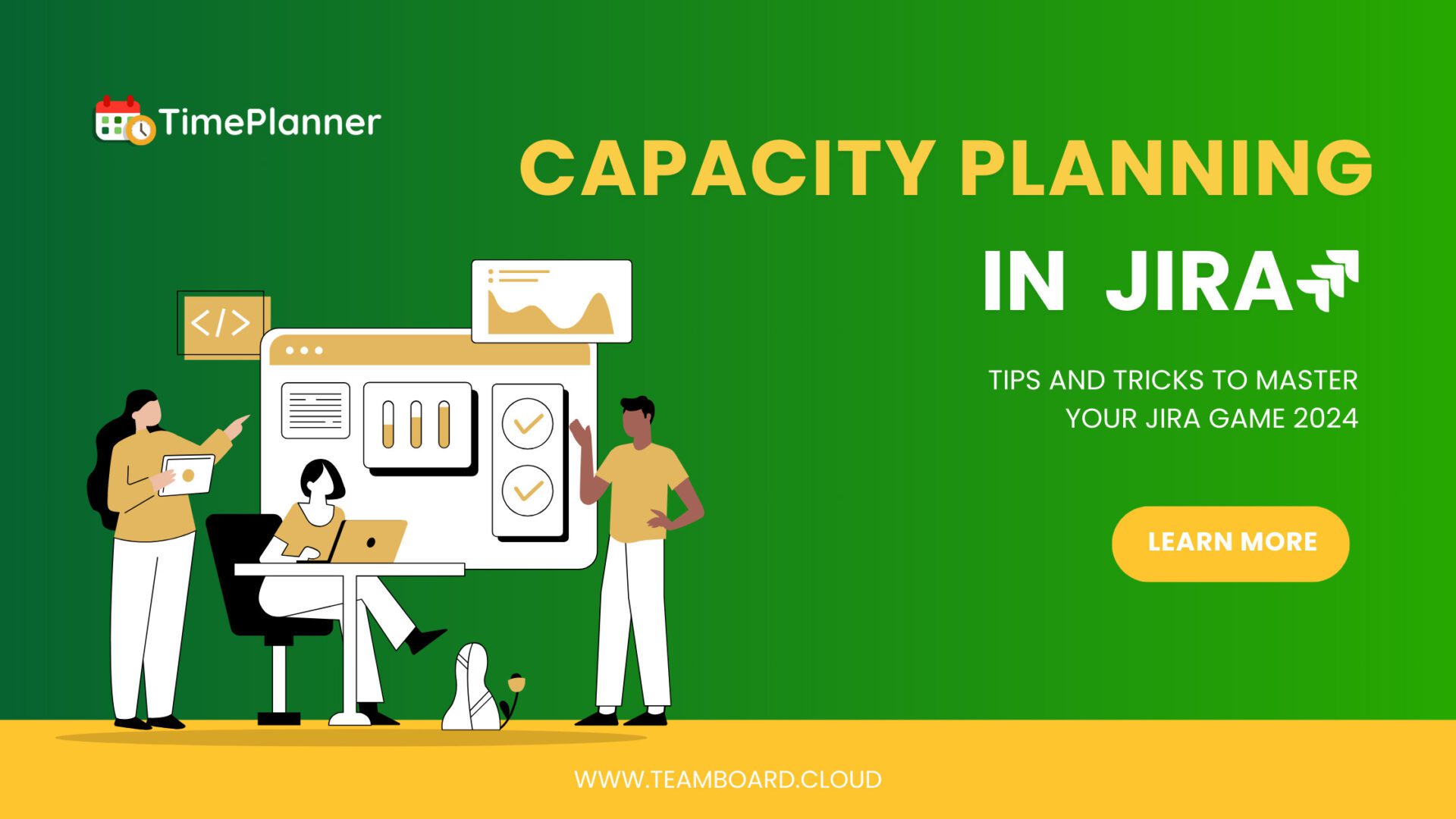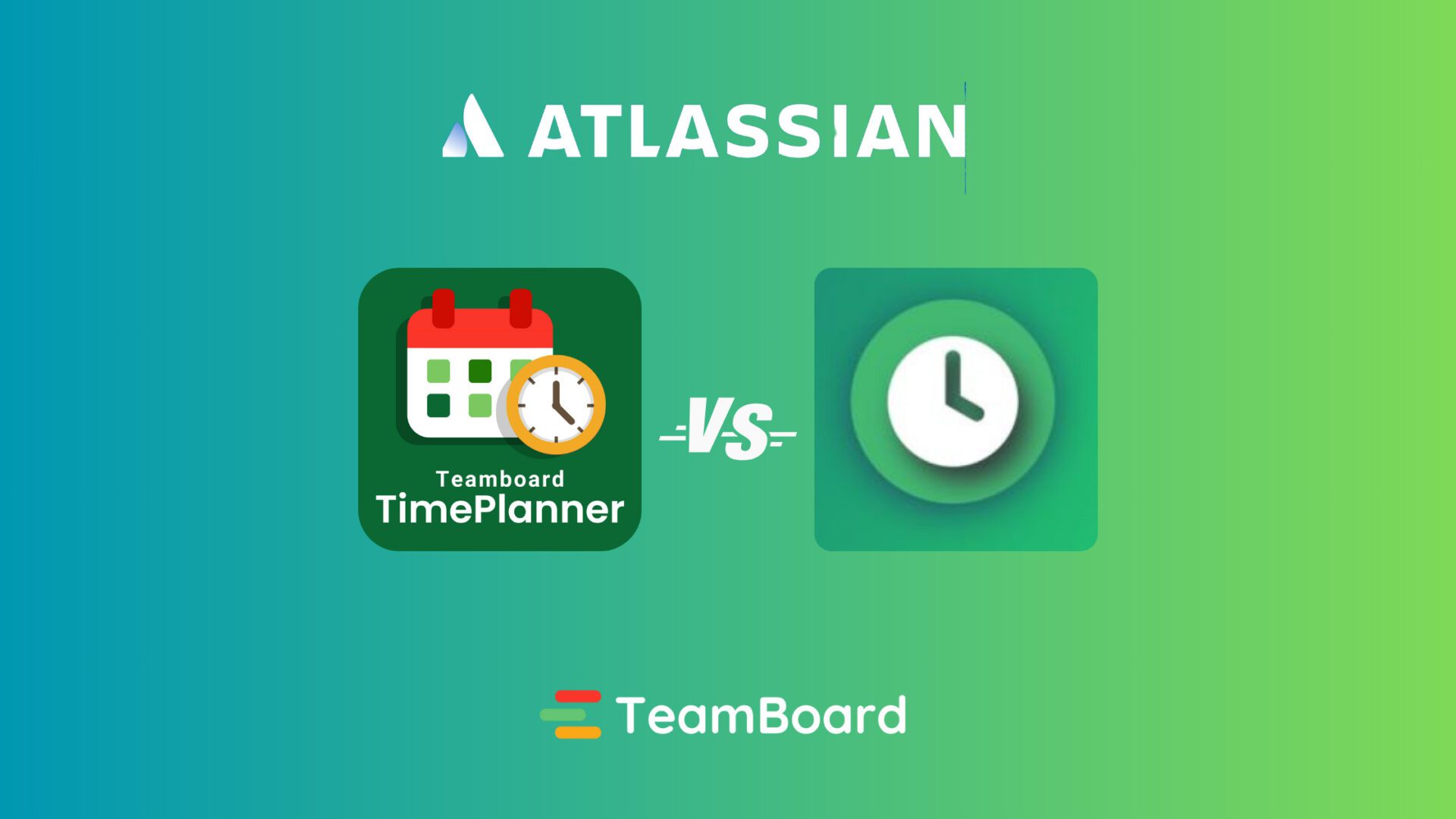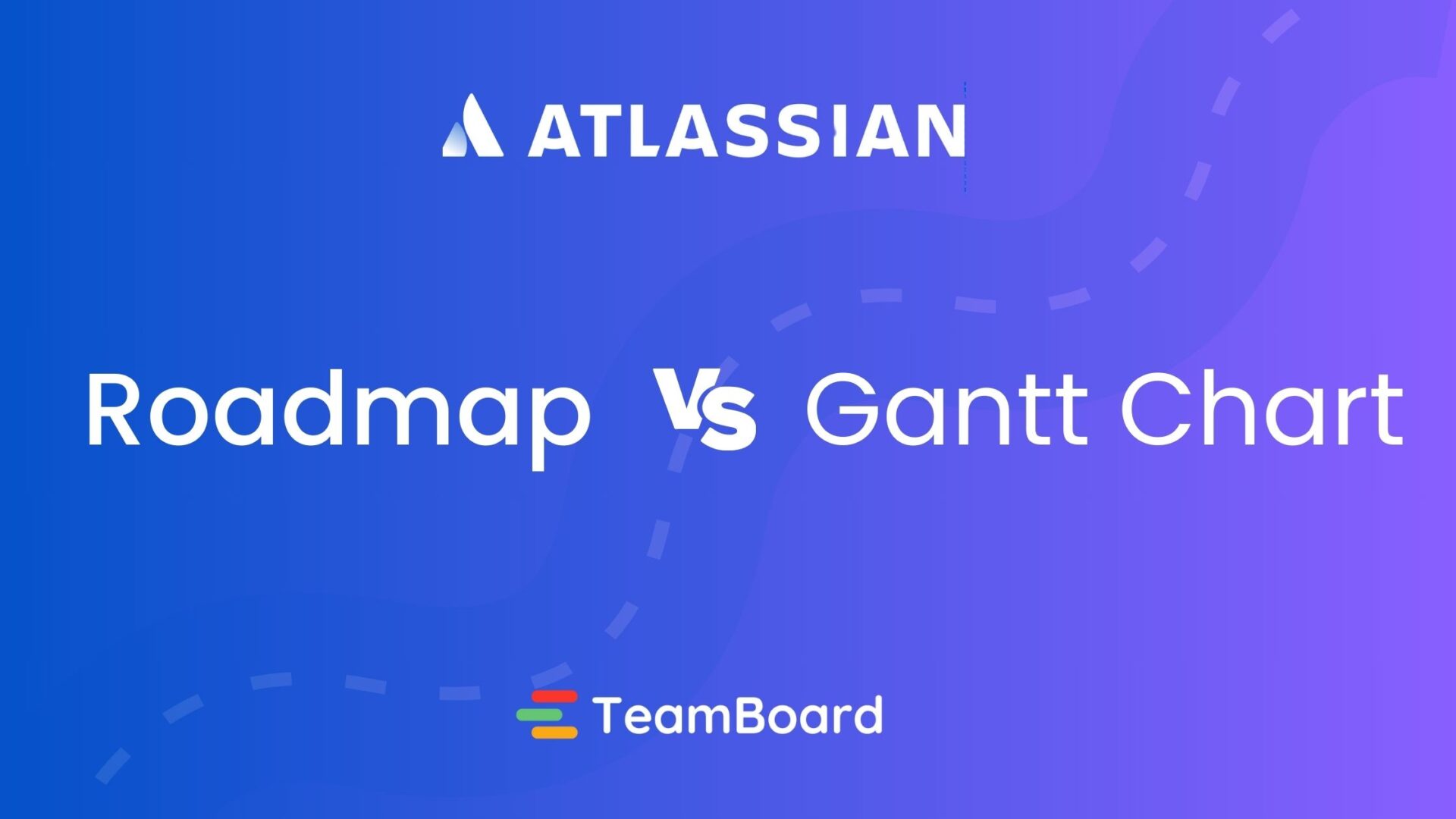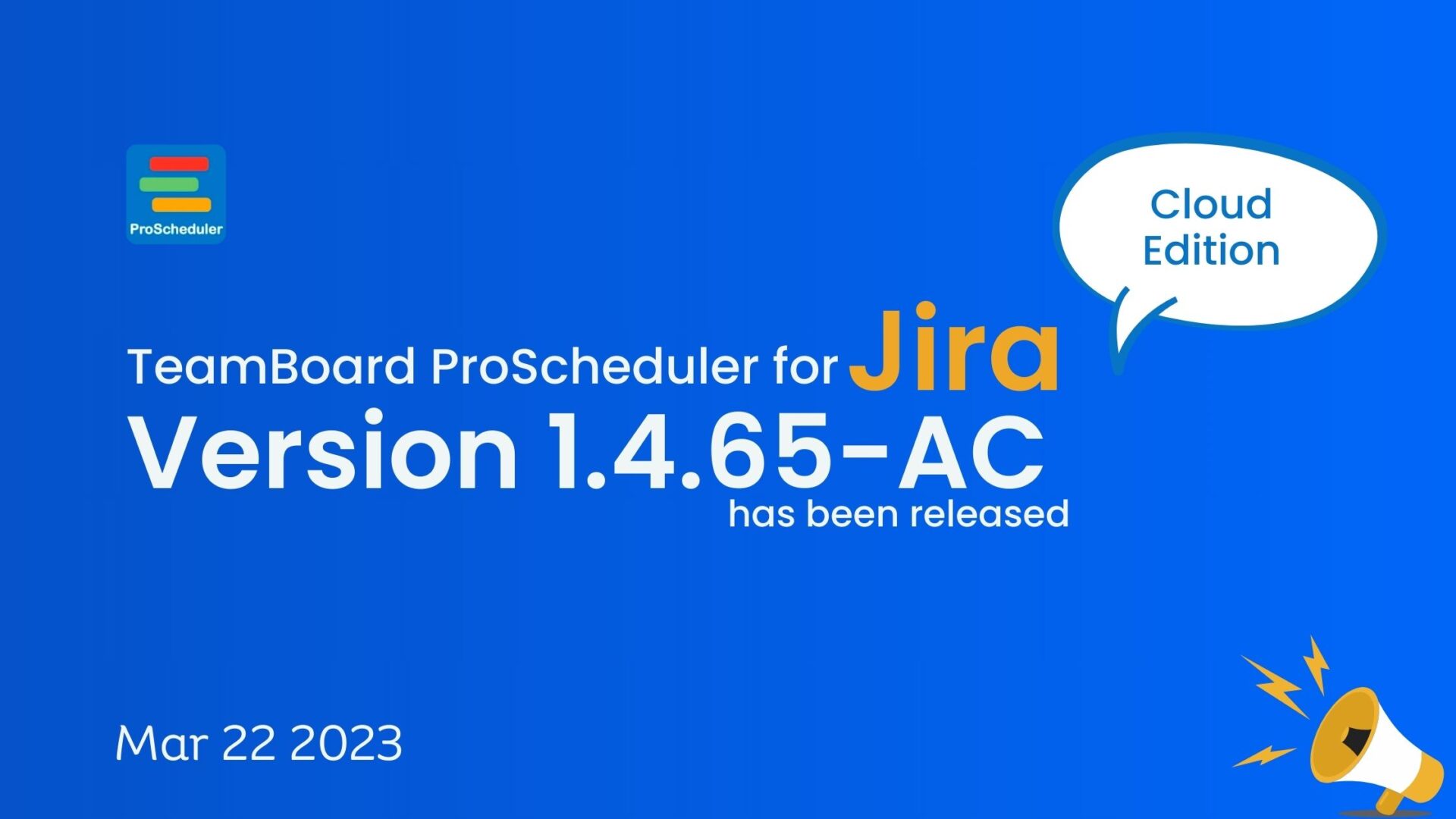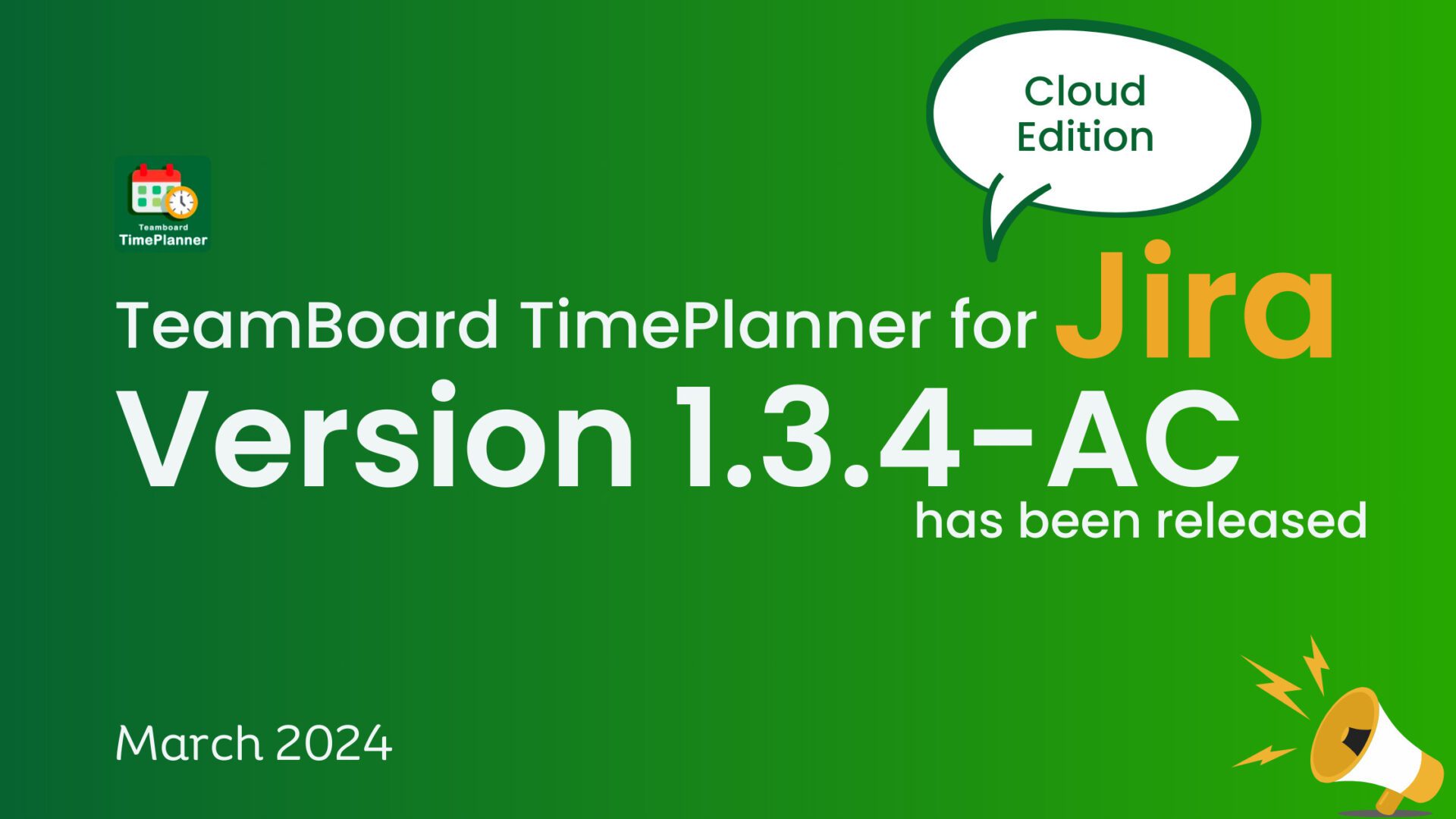Balancing the workload of your team is a critical aspect of project management that directly impacts productivity, morale, and the overall success of your projects. In the world of Agile and software development, Jira stands out as a powerful ally, offering a suite of features tailor-made for effective workload management. However, the richness of Jira’s functionalities also brings with it a level of complexity that can be overwhelming for many. This blog is crafted to simplify that complexity, guiding you through the essential steps to manage your team’s workload efficiently using Jira. We will delve into how to accurately set up capacities, schedule tasks effectively, monitor time spent, and estimate remaining efforts, all within the framework of Jira. Additionally, we will address common challenges that teams face in workload management and provide practical solutions to navigate these hurdles.
Table of Contents
1. Understand Your Team’s Capacity
Understanding your team’s capacity is the cornerstone of effective workload management in Jira. It’s about knowing the limits and capabilities of your team to allocate tasks and projects realistically. Here’s how to approach this crucial step:
Start with the Basics
- Define Capacity: Begin by defining what capacity means for your team. It can include hours per day, story points per sprint, or any other unit of measurement that suits your team’s working style.
- Gather Data: Collect historical data on your team’s performance. Look at past sprints or projects to gauge how much work your team has been able to handle without compromising quality or well-being.
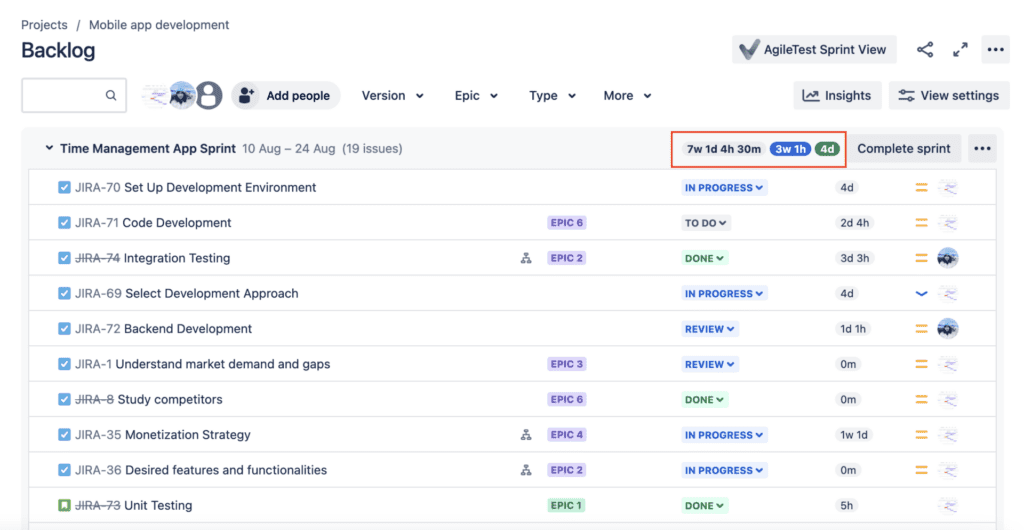
- TeamBoard App: With the TeamBoard app users can easily create the Capacity Scheme for each user.
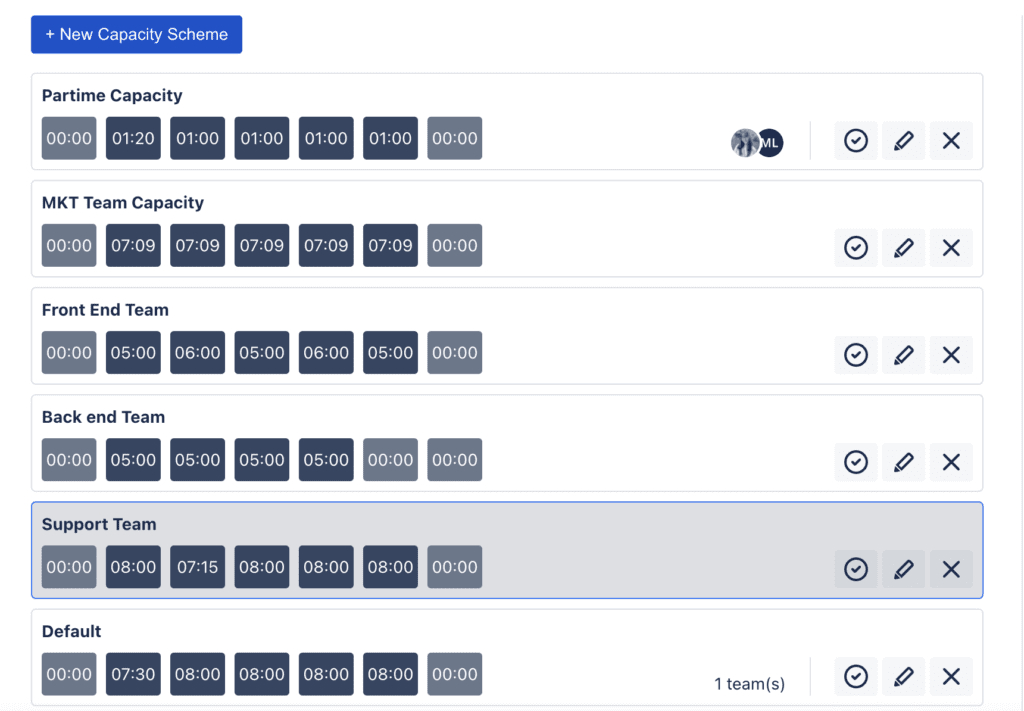
Use Jira Tools
- Configure Work Hours: Utilize Jira’s time tracking and sprint planning features to set up individual work hours. This helps in understanding how many productive hours are available for project tasks.
- Leverage Velocity Charts: For Agile teams, velocity charts in Jira provide insights into the average amount of work (in story points) your team can complete in a sprint. This is invaluable for planning future sprints.
Consider Variabilities
- Account for Non-Project Time: Remember to subtract time for meetings, training, and other non-project activities from the total capacity. This gives you a more accurate picture of available time for project work.
- Plan for Absences: Factor in planned vacations, public holidays, and possible sick leaves to avoid overestimating your team’s capacity.
2. Schedule Work Based on Capacity
Scheduling work based on your team’s capacity is a strategic approach to ensure that workload distribution is both realistic and sustainable. By aligning tasks with the actual bandwidth of your team, you can enhance efficiency and prevent burnout. Here’s how to effectively schedule work in Jira, taking into account your team’s capacity:
Prioritize and Plan
- Set Clear Priorities: Begin by identifying the most critical tasks. Use Jira’s ranking or priority settings to organize work according to urgency and importance.
- Break Down Tasks: Divide larger projects into smaller, manageable tasks. This not only makes scheduling easier but also allows for a more precise estimation of effort and time.
Use Jira’s Scheduling Features
- Sprint Planning: For Agile teams, utilize the Sprint Planning feature to assign tasks to sprints based on the team’s velocity and capacity insights. Ensure that the total effort does not exceed the team’s known capacity.
- Version Releases: Use the Versions feature in Jira to schedule work aimed at specific releases. Assign tasks to versions based on their priority and the team’s capacity.
Incorporate Flexibility
- Buffer Time: Always include buffer time in your schedule for unforeseen delays or issues. A general rule of thumb is to allocate 10-20% of the team’s capacity as a buffer.
- Adjust as Needed: Stay flexible and be prepared to adjust the schedule as work progresses. Use Jira’s drag-and-drop functionality in the backlog and active sprints to re-prioritize tasks on the fly.
3. Track Time Spent and Monitor Progress
Once you have understood your team’s capacity and scheduled work accordingly, the next critical step is to track the time spent on tasks and monitor the progress of your projects in Jira. This ensures that your team remains on track and that any deviations from the plan are identified and addressed promptly. Here’s how to effectively implement this step:
Utilize Time Tracking in Jira
- Enable Time Tracking: Make sure time tracking is enabled in your Jira settings. This allows team members to log the time they spend on each issue or task.
- Encourage Regular Updates: Foster a culture where team members update their time spent on tasks daily. This habit ensures data accuracy and helps in identifying issues early.
Set Up Time Reports and Dashboards
- Create Time Tracking Reports: Use Jira’s reporting features to generate time tracking reports. These reports can show you how much time was spent on different tasks, helping you assess if the workload is distributed according to plan.
- Customize Dashboards: Tailor your Jira dashboard to include gadgets that display time tracking information, such as ‘Time Spent’ or ‘Workload Pie Chart’. This provides a quick overview of where the team’s efforts are being focused.
Monitor Progress Against Estimates
- Compare Actual vs. Estimated Time: Regularly compare the actual time spent on tasks against the original estimates. This comparison helps identify tasks that are taking longer than expected, indicating potential bottlenecks or scope creep.
- Adjust Schedules as Needed: Based on your findings, adjust task schedules and redistribute workloads to ensure deadlines are met without overburdening any team member.
4. Manage Remaining Time and Adjust as Necessary
Effectively managing the remaining time on tasks and projects is vital to ensuring that deadlines are met and workloads remain balanced. In Jira, this involves continuously assessing the time left versus the work yet to be done and making necessary adjustments to keep everything on track. Here’s how to approach this crucial aspect of workload management:
Assess Remaining Time Regularly
- Use Jira’s Remaining Time Field: Encourage your team to update the ‘Remaining Time’ field as they progress through tasks. This provides a clear, real-time view of how much work is left versus the initial estimates.
- Review at Key Milestones: Set specific milestones for your project or sprint to review the remaining time against the work done. This helps in identifying any discrepancies early on.
Analyze Variance Between Estimated and Actual Time
- Monitor Time Variances: Use Jira reports to compare the estimated time for tasks against the actual time logged. Significant variances may indicate issues with task complexity, underestimation, or unforeseen challenges.
- Adjust Estimates for Future Tasks: Based on the variance analysis, adjust the time estimates for future tasks or sprints to reflect more accurately the team’s actual working pace.
Adapt Plans Based on Progress
- Re-prioritize Tasks: If you find that your team is behind schedule, consider re-prioritizing tasks based on importance and deadlines. Focus on what’s crucial to the project’s success and adjust the workload accordingly.
- Redistribute Workloads: If certain team members are underutilized while others are overwhelmed, redistribute tasks to balance the workload more evenly. This not only helps in meeting deadlines but also in maintaining team morale.
Utilize Jira’s Agile Boards for Visibility
- Visualize Work with Boards: Agile boards in Jira provide a visual overview of all tasks and their statuses. Use these boards to quickly identify bottlenecks or tasks that are lagging behind.
- Adjust Sprint Plans if Necessary: For Agile teams, be prepared to adjust your sprint plans based on the team’s velocity and the remaining backlog. Flexibility is key to managing workload effectively in an Agile environment.
Tools and Features in Jira for Effective Workload Management
- Dashboards: Customize dashboards to include gadgets that show team capacity, workload distribution, and sprint progress.
- Reports: Generate reports such as burndown charts, sprint reports, and velocity charts for agile teams to monitor and adjust planning.
- Add-ons: Consider using add-ons from the Atlassian Marketplace that enhance workload management capabilities, like TeamBoard Timeplanner for time tracking or TeamBoard ProScheduler for portfolio management.
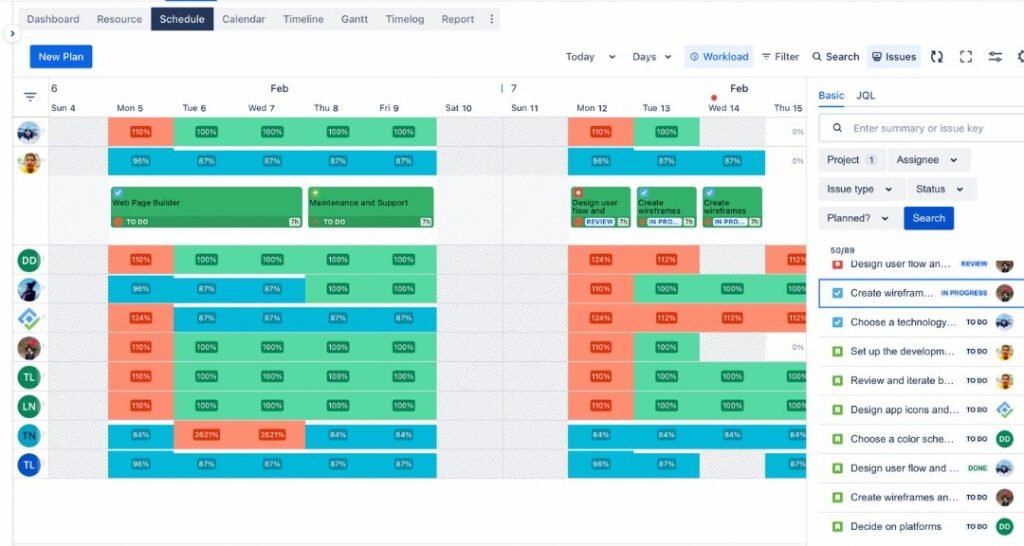
Common challenges of workload management (+ solutions)
Managing a team’s workload effectively is essential for productivity, satisfaction, and achieving goals. However, this task comes with its set of challenges. Here are some common issues related to workload management, along with proposed solutions:
1. Overallocation of Tasks
Challenge: Assigning more tasks than a team member can handle within a given timeframe can lead to burnout and reduced quality of work.
Solution: Use workload management tools like Jira to monitor individual capacities. Implement agile methodologies to adjust workloads in real-time and ensure tasks are evenly distributed.
2. Underestimation of Task Complexity
Challenge: Misjudging the complexity of a task can lead to unrealistic deadlines and pressure on team members.
Solution: Encourage thorough planning and involve experienced team members in the estimation process. Use historical data on similar tasks to better estimate time requirements.
3. Lack of Visibility into Team Capacity
Challenge: Without a clear view of each team member’s capacity and current workload, it’s challenging to allocate tasks effectively.
Solution: Utilize the “capacity planning” and “workload” features in tools like Jira to gain insights into available resources and adjust assignments accordingly.
4. Ineffective Communication
Challenge: Poor communication can lead to misunderstandings about priorities, deadlines, and expectations.
Solution: Foster open channels of communication. Regularly scheduled meetings and the use of collaborative platforms can help keep everyone informed and aligned on priorities.
5. Difficulty in Tracking Progress
Challenge: Without a way to track progress, it can be hard to identify bottlenecks or understand if a project is on schedule.
Solution: Leverage Jira’s “time spent” and “remaining time” metrics for tasks to monitor progress. Adjust plans based on real-time data to stay on track.
6. Resistance to Change
Challenge: Teams may resist new management methods or tools, which can hinder the implementation of more efficient processes.
Solution: Provide training and highlight the benefits of new systems or methodologies. Encourage feedback and make adjustments to ensure the new processes are beneficial and user-friendly.
7. Prioritization Issues
Challenge: Teams often struggle with understanding which tasks should be prioritized, leading to critical work being delayed.
Solution: Use prioritization frameworks (e.g., MoSCoW, Eisenhower Matrix) within your workload management tool to clarify task urgency and importance. Regularly review priorities with the team.
Implementing Solutions:
Capacity Planning: Regularly review your team’s capacity and adjust workloads to avoid overallocation.
Scheduled Reviews: Conduct scheduled reviews of workload and progress to ensure tasks stay on track and team members remain unburdened.
Monitoring Time Spent and Remaining: Utilize Jira’s tracking features to monitor the time spent on tasks and the remaining time, enabling necessary adjustments.
By addressing these challenges with strategic solutions, you can significantly improve your team’s efficiency, morale, and overall performance in managing workloads.
In wrapping up, mastering workload management in Jira centers on understanding your team’s capacity, strategically scheduling tasks, tracking time spent, and adjusting as necessary. Leveraging Jira’s robust features, such as boards, time tracking, and reporting, can significantly streamline this process. The essence of effective workload management lies in continuous learning and adaptation, aiming not just for task completion but for maintaining high team morale and project quality. Embrace the tools and strategies discussed, tailor them to your team’s needs, and continuously refine your approach. By doing so, you’re setting your team on a path to enhanced productivity and project success, all while fostering a supportive and efficient work environment.



